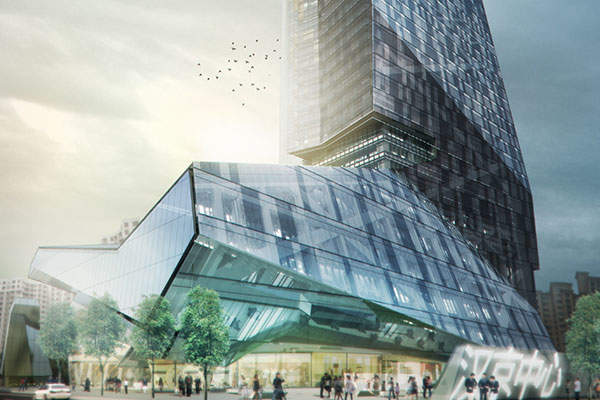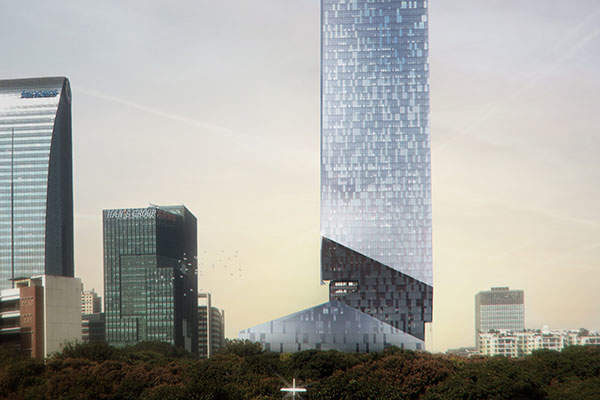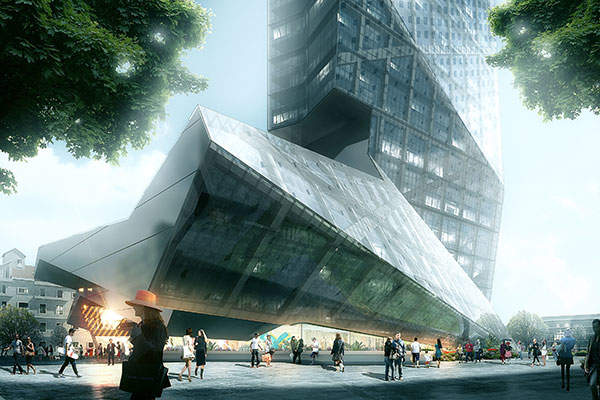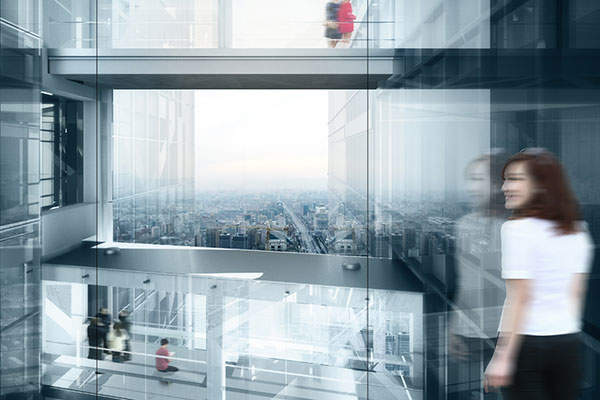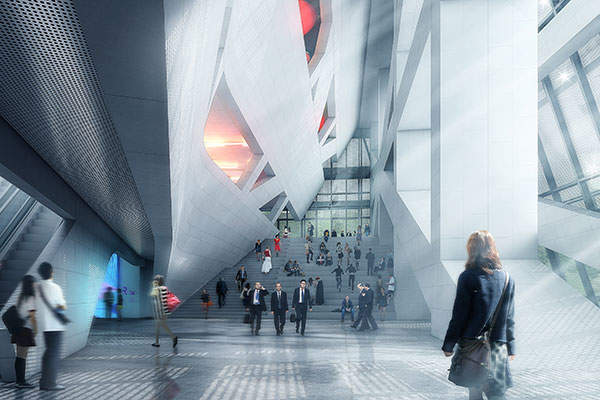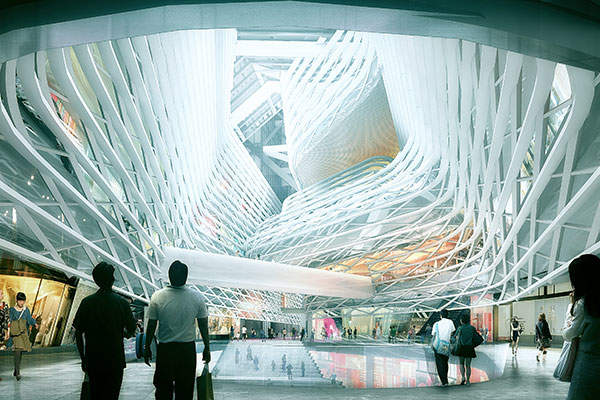Hanking Center Tower is a 350m-tall mixed-use building that is under development on Shennan Boulevard, in the Nanshan district of Shenzhen, China.
Los Angeles-based Morphosis Architects designed the high-rise structure, which is expected to be the tallest steel braced frame building in China upon completion. The building broke ground in April 2015, and construction is expected to be completed by 2016.
Developed by Hanking Group, the complex will contain approximately 100,000m2 of office space, spread over 60 stories, as well as five levels of mechanical and refuge spaces. A six-storey podium at the base of the tower will house high-end retail outlets and restaurants.
Hanking Center Tower design
The slender building will consist of two towers separated by a 10.5m gap along the entire height of the structure. The main south tower will contain the commercial office space, and the north tower will house elevators to transport people across the building, VIP elevators, freight elevators, and mechanical services.
By offsetting the circulation core, the structural footprint of the main commercial tower will be minimised and large, open and flexible office spaces will be created. A series of sky bridges and diagonal mega-braces will connect the two towers at each level.
Unlike conventional towers, the public space in the podium will be merged with private commercial space to create a sun-lit atrium at the main tower’s core. Glazed lobbies and sky gardens will be situated every five floors, and will act as a communal hub that is accessible to all tenants.
Hanking Center Tower facade
The facade of the building will comprise a transparent glass shell, which will provide a glimpse of the interior mechanics and structure. The glazed facade will offer panoramic views of the city, as well as allow abundant natural light and airflow from operable windows into the building.
The south face of the building will have a sloping facade with slope reversals in three locations, thus creating four different planes on the facade.
The podium structure will have a facade made of folded angles, which will merge seamlessly with the tower component of the building.
Structural design of the building
The building is designed to withstand large wind loads during typhoon and seismic events that are common to the Shenzhen region.
The lateral load resisting system chosen to strengthen the structure is a braced steel frame with concrete-filled box columns. The use of concrete fill reduces the cost of the columns as well as making them heavier, therefore minimising uplift tensions caused by wind or seismic load combinations.
Vertical columns will be placed far from the centre of the tower to carry the overturning compressive and tensile forces created by the large wind loads. The columns will be connected by mega bracing consisting of steel box shapes to create a closed tube to resist the lateral shear forces.
The intermittent bracing will tie the core elements together and outriggers will join the core to the opposite facet of the tower at mechanical levels.
The horizontal diaphragm forces will be transferred between the two towers by placing two horizontal ‘X’ braces every four stories.
Contractors involved
Zhubo Design, based in Shenzhen, is the associate architect for the project. John A. Martin Associates consulted on the structural concepts for the building while Halvorson + Partners provided structural engineering services.
Parsons Brinckerhoff is the mechanical, engineering, plumbing and drainage consultant for the project and is also responsible for providing intelligent extra-low voltage technology, fire protection systems, and elevator design.
Stantec is responsible for the MEP and façade concepts while SuP Ingenieure, a company based in Darmstadt, is the facade consultant. W.erk Studios is the general tower consultant for the project.

